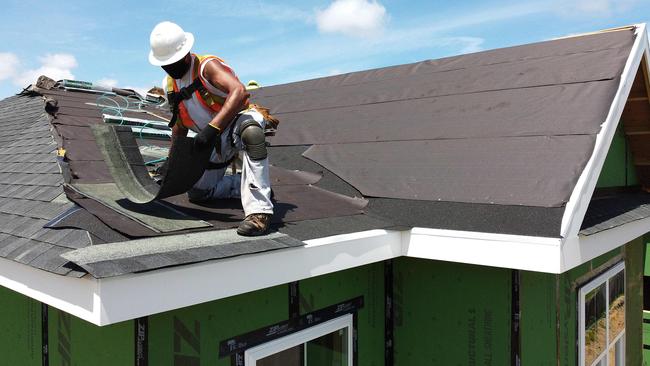Residential construction key to economic recovery
Independent research has supported claims from developers that the industry will be crucial in stoking an economic recovery.

Residential construction has been found to have the second highest economic multiplier effect on the Australian economy, backing claims from major developers that the industry will be crucial in stoking an economic recovery.
Property companies have reported a pick-up in sales in outer suburban housing estates and regional areas from the Morrison government’s HomeBuilder package, even as apartment developers have claimed they have missed out.
Both the troubled apartment market and the now recovering home auction market show the system is under stress, with revelations that the Reserve Bank even considered calling a halt to residential sales at the height of the pandemic.
While this course was not pursued, independent research by the National Housing Finance and Investment Corporation showed nine jobs were supported across the economy for every $1m spent on residential construction.
NHFIC chief executive Nathan Dal Bon said this meant that every new home built generated an average of three jobs throughout a range of industries, based on the average dwelling construction cost.
“Understanding how residential construction activity may affect jobs and flow through to the broader economy is increasingly important and timely, given the impact of COVID-19,” Mr Dal Bon said.
The Building Jobs report found that $1m of output in residential construction supports around $2.9m of industry output and consumption across the broader economy.
The employment impact on construction services such as plumbing, electrical, bricklaying and carpentry is almost four times that of any other industry connected to the residential construction industry, the report found.
Around 134,000 people are directly employed in residential construction and the industry contributes about 5 per cent to annual GDP.
The housing market remains under pressure and the RBA in April considered but rejected a recommendation to the federal government that would have effectively paused operations of the residential property market, internal correspondence obtained by the ABC via Freedom of Information showed.
Property analysts said such measures would have induced fear and caused more harm than good, noting that the market had continued to operate even when movement restrictions were in place.
SQM Research managing director Louis Christopher said discussing such a policy was concerning and showed the RBA was placing far more importance on the property market as an economic lever than it was letting on.
“There is a real divergence in what the RBA was thinking and what they were telling the community. There should have been more transparency to keep people informed,” he said.
The worst fears for the market appear to have passed with some agents reporting on a pick-up in activity in the traditionally quiet winter selling season.
Real estate agency Knight Frank said Australia’s coronavirus health record and an attractive Australian dollar were two important factors influencing cashed-up expats in deciding to flock home.



To join the conversation, please log in. Don't have an account? Register
Join the conversation, you are commenting as Logout